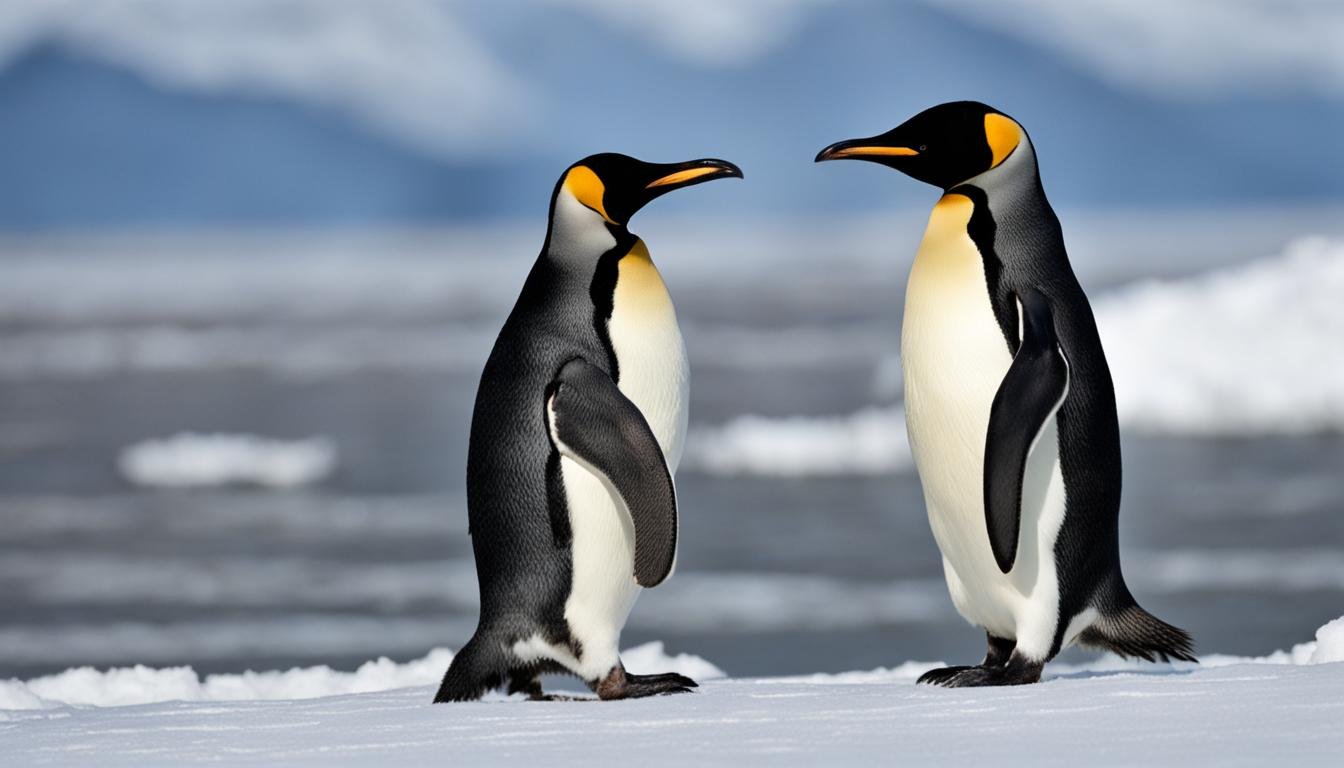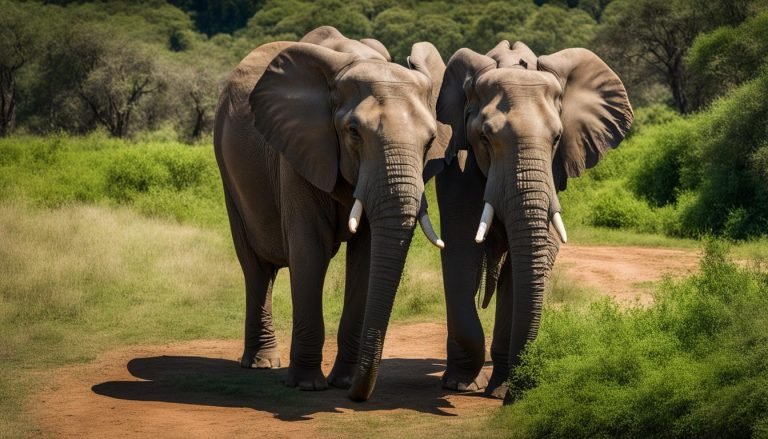How Do Penguins Mate? Mating Explained
Have you ever wondered how penguins mate? These fascinating birds have unique mating behavior, breeding habits, and reproduction processes. In this article, we will delve into the intricacies of penguin courtship and explore the various nesting habits and reproduction cycles of these flightless wonders. Get ready to discover the secrets of penguin romance!
Key Takeaways:
- How Do Penguins Mate?
- Examining Penguin Mating Behavior and Breeding Habits
- Exploring Penguin Nesting Habits and Incubation Periods
- The Intriguing Penguin Reproduction Process
- Understanding the Unique Strategies Used by Penguins to Attract a Mate
Penguin Quiz
How well do you know penguins? Test your knowledge here!

Understanding Penguin Courtship Rituals
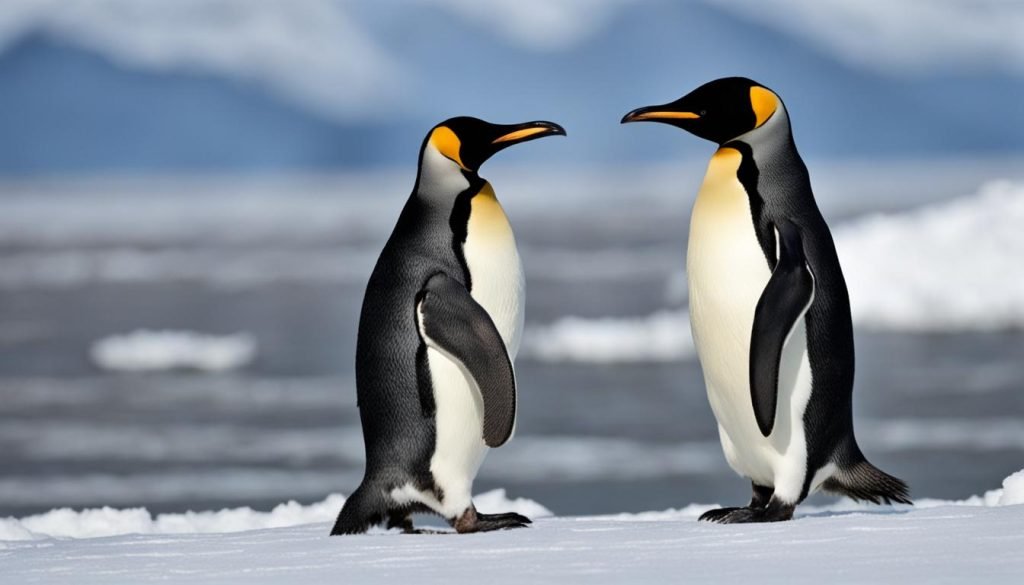
Penguins are known for their unique courtship behaviors, which are essential in attracting a potential mate and building lasting relationships. In this section, we will explore the different courtship rituals exhibited by penguins and the factors that influence them.
Penguin Courtship Rituals
Penguins engage in a variety of courtship behaviors that are specific to their species. For example, male Adélie penguins will choose a nesting spot and then attract a female by using stones to build a nest and present it to her as a gift. Emperor penguins, on the other hand, engage in a highly coordinated courtship dance that involves bowing, calling, and preening.
Other common courtship behaviors exhibited by penguins include vocalizations, physical displays, and offering of gifts. These behaviors play an essential role in the penguin mating process and are necessary in finding a compatible partner.
Penguin Mating Season
The timing of the penguin mating season varies between species and is influenced by environmental factors such as temperature, daylight, and food availability. Most penguins mate during the spring and summer months when conditions are optimal for breeding. During this time, penguins will engage in courtship behaviors to attract a mate and form lasting pair bonds.
Penguin Pair Bonding
Pair bonding is a crucial aspect of penguin relationships, providing benefits such as shared parental responsibilities, enhanced communication, and increased protection from predators. Once penguins have formed a pair bond, they will stay together for multiple breeding seasons and often return to the same nesting location year after year.
For example, the Adélie penguin population of Cape Crozier in Antarctica has been observed to return to the same nesting location for over 100 years, demonstrating the strength and longevity of pair bonds in penguins.
Overall, penguin courtship rituals, mating season, and pair bonding are fascinating aspects of these unique birds. By understanding these behaviors, we can gain insight into the complex lives of penguins and appreciate the incredible efforts they go through to build and maintain relationships with their partners.
Exploring Penguin Nesting Habits
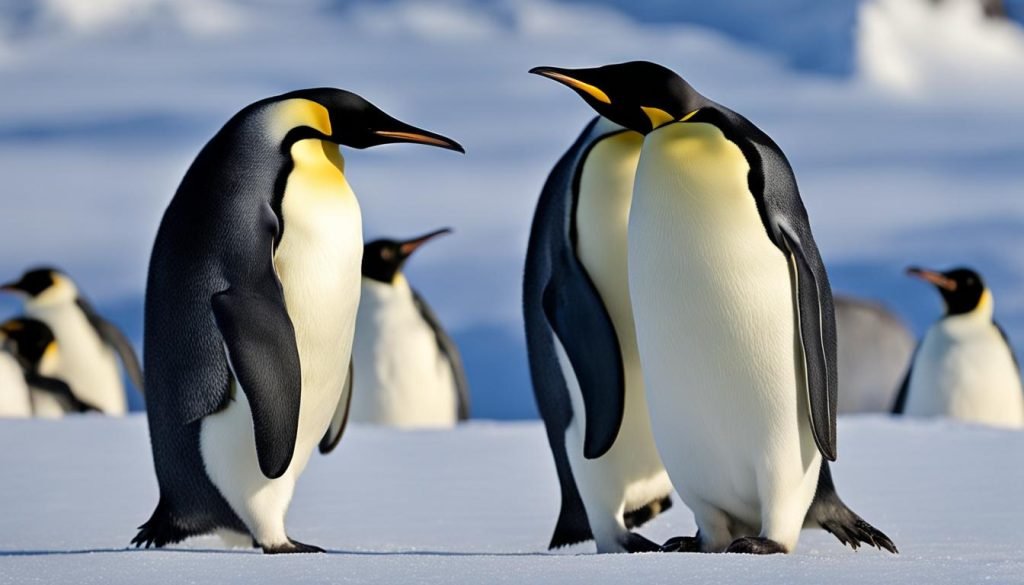
Penguins have evolved unique nesting habits that allow them to survive in harsh environments. These nesting habits vary depending on the species of penguin and the location of their habitat. In this section, we will explore the different types of penguin nests, their construction methods, and the vital role of incubation in the penguin life cycle.
Penguin Nests
There are several types of penguin nests, ranging from simple scrapes in the ground to elaborate structures made of stones and vegetation. The type of nest constructed by penguins depends on various factors such as available nesting materials, environmental conditions, and the presence of predators. Some of the most common types of penguin nests are:
| Type of Nest | Description |
|---|---|
| Scrape Nest | A pile of stones, pebbles, or vegetation that protects from the wind and cold. |
| Mound Nest | A pile of stones, pebbles, or vegetation that provides protection from the wind and cold. |
| Burrow Nest | A hole dug into the ground or snowbank that provides insulation and protection from predators. |
Some penguin species, such as the Emperor penguin, have their nests located on the ice, while others, such as the Magellanic penguin, nest in burrows.
Penguin Incubation Period
Once penguins lay their eggs, they begin incubating them to ensure they hatch successfully. The incubation period varies depending on the species and can range from 30 to 70 days. During this period, one or both parents will remain in the nest to keep the eggs warm and protect them from predators. Penguins have evolved several strategies to ensure the survival of their offspring, including rotating egg incubation duties and forming cooperative crèches to protect and rear chicks.
“The ability of penguins to adapt to their environment is truly remarkable. Their nesting habits are a prime example of this, allowing them to thrive in some of the harshest conditions on earth.”
How Do Penguins Mate: The Penguin Reproduction Process
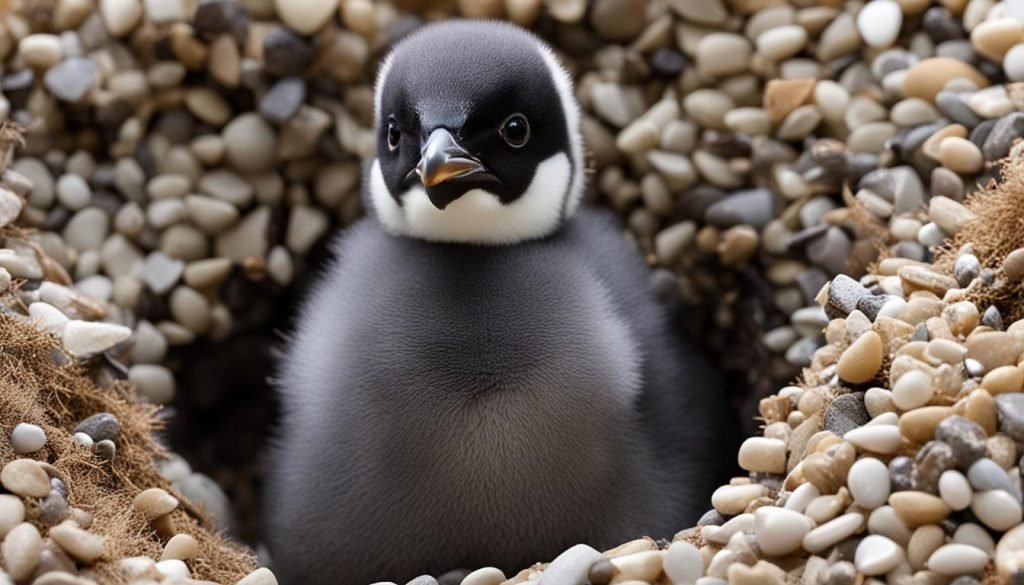
The reproduction process of penguins is a complex and fascinating journey that begins with the formation of eggs. Penguins are known for their unique breeding habits, which involve a specific mating season and pair bonding. Once a female penguin lays an egg, the incubation process begins, which is crucial to the development of the chick.
The incubation period varies depending on the species of penguin, but it typically lasts between 30 to 60 days. During this time, the male and female penguins take turns incubating the egg, with the male incubating the egg for the first few weeks and the female taking over during the later stages.
Once the egg hatches, a fluffy gray chick emerges, which is completely dependent on its parents for survival. Penguin chicks are born with a thick layer of insulation to protect them from the cold Antarctic weather.
As the chick grows, its parents take on different responsibilities in caring for their young. The male penguin is primarily responsible for feeding the chick by regurgitating food he has stored in his stomach. The female penguin, on the other hand, is responsible for protecting the chick from predators and teaching it necessary survival skills.
Penguin Chick Rearing
Penguin chick rearing is a challenging but rewarding experience for penguin parents. The process requires dedication and skill to ensure the chick’s survival in a harsh and often unpredictable environment.
As the chick grows, it begins to develop its feathers and can regulate its body temperature. At this point, the parents begin to take the chick on short trips away from the nest to introduce it to the surrounding area and teach it how to swim and hunt for food.
By the time the chick is fully grown, it will have learned all the necessary skills to survive in the Antarctic wilderness. The parents will continue to care for the chick until it is independent enough to fend for itself and begin its journey of courtship and reproduction.
Understanding Penguin Mating Behavior
When it comes to mating behavior, penguins have some fascinating strategies to attract a mate. Their behaviors have been shaped by the harsh environment they inhabit, and they have developed unique tactics to ensure reproductive success.
Visual displays
Penguins use visual displays to attract a mate, such as extending their necks, flapping their wings, and opening their beaks. These behaviors are more commonly seen in males, who use them to attract females.
Vocalizations
Penguins are also known for their vocalizations, which they use to communicate with potential mates. They make a variety of sounds, from soft coos to loud squawks, depending on the species. These calls are distinct to each penguin, and they use them to identify their partner and offspring.
Physical rituals
Penguins also engage in physical rituals to attract a mate, such as bowing, preening, and touching beaks. These actions help to establish a bond between partners and are a crucial part of penguin courtship.
Penguin Breeding Habits
Penguins are monogamous, meaning they choose one partner for life. This bond is strengthened through pair bonding, which involves regular displays of affection and mutual grooming. Penguins are also known to renew their vows every year by performing courtship rituals.
The Importance of Penguin Mating Behavior
Understanding penguin mating behavior is essential for conservation efforts. As climate change continues to impact penguin populations, it is crucial to understand their reproductive habits to ensure their survival. By studying penguin mating behavior, we can learn more about their ecology and biology and develop strategies to protect their habitats.
Penguin Mating Season and Pair Bonding
Penguins have a specific mating season that varies among different species. For instance, the Emperor Penguins usually mate between March and September, while the Adelie Penguins mate between October and February. The timing of the mating season is affected by various factors, including the availability of food and the harshness of the weather conditions.
During this time, the male penguin will display several courtship behaviors to attract a mate, such as calling out loudly and presenting gifts like pebbles, twigs, or feathers to the female. However, not all male penguins will find a mate during the mating season, and those who don’t will have to wait until the next season to try again.
Pair bonding is crucial for penguins to ensure a successful mating season. Once a penguin pair has formed, they will remain together for the rest of the season, engaging in various mating rituals. Pair bonding is also essential for penguins when rearing their chicks; the stronger the bond, the better the chances of survival for their offspring.
“Pair bonding is critical for the Emperor Penguins to withstand the harsh Antarctic winters and ensure the survival of their offspring.”
Apart from ensuring successful reproduction and chick rearing, pair bonding also plays an essential role in the emotional well-being of penguins. Studies have shown that a healthy and strong bond between penguin pairs can result in lower stress levels, higher weight gain, and better overall health.
In summary, the timing of the mating season and pair bonding are critical factors in the successful reproduction and survival of penguins. By engaging in elaborate courtship rituals and strengthening their bond, penguins ensure the best possible chances for the survival of their offspring and their emotional well-being.
Penguin Chick Rearing and Parental Care
Once penguin chicks are hatched, their parents take on the important responsibility of rearing them. The process of chick rearing is crucial for the survival and growth of the young penguins.
Feeding
Penguin parents provide their chicks with regurgitated food, usually consisting of krill or small fish. Both parents take turns feeding the chicks, sometimes traveling long distances to find food. Chicks require frequent feeding, up to 10 times a day, to ensure they receive enough nutrients for healthy growth.
Protecting
Penguin parents are also responsible for protecting their chicks from predators and harsh weather conditions. Adult penguins use their wings to shield their chicks from the wind, snow, and rain. They also form groups, or creches, to protect the chicks from predators such as skuas and giant petrels.
Teaching
Parental care also includes teaching the chicks the necessary skills for survival. Adult penguins demonstrate how to swim and hunt for food, and they also teach their young how to communicate with other penguins using vocalizations and body language. These skills are vital for the chicks to develop and navigate their environment successfully.
In conclusion, penguin chick rearing and parental care are essential components of the penguin reproduction process. From feeding to protecting and teaching, penguin parents play a crucial role in the upbringing of their young.

